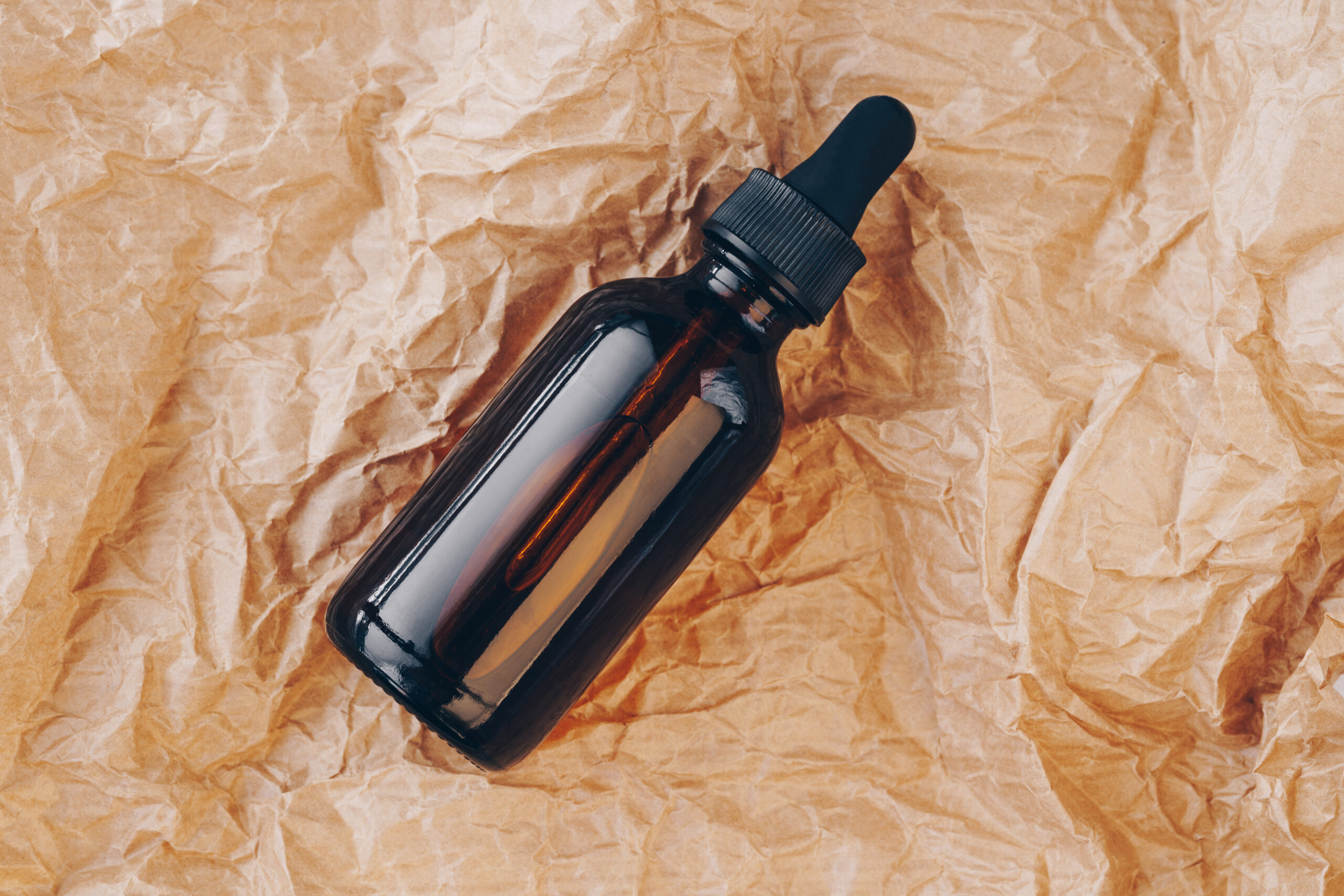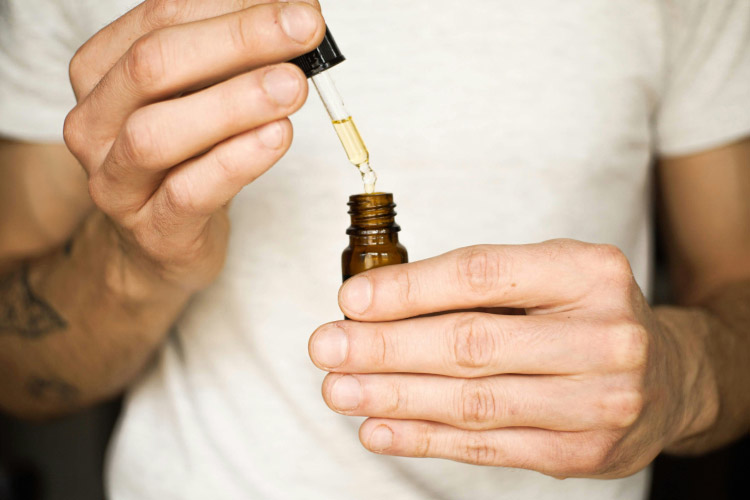From sleek rechargeable vape pens to potent cannabis concentrates and irresistible edibles, the sky’s the limit when it comes to accessing the power of cannabis. But with all these cutting-edge options, a true classic stays in demand: meet cannabis tinctures.
THC and CBD tinctures have a long tradition as a useful remedy for many. Until the early 20th century, cannabis tinctures were a relatively uncontroversial component of American pharmacy shelves. As the wave of cannabis prohibition took hold, they more or less disappeared. But thanks to legalization and a growing interest in cannabis across the board, today, tinctures have made a big comeback.
Cannabis Tinctures at a Glance
Cannabis tinctures are liquid extracts that deliver cannabinoids quickly and precisely—just a few drops under the tongue can offer fast, controlled effects without smoking or vaping. They’re prized for their versatility, whether you’re microdosing for balance or taking higher doses for stronger relief.
Consistency is key: start low, increase gradually, and measure using the dropper for accuracy. Proper storage (cool, dark places away from sunlight) keeps potency and flavor intact. Ultimately, tinctures combine old-school simplicity with modern precision, earning their place as one of the most adaptable cannabis formats available.
What Is a Cannabis Tincture?
Weed tinctures are extracts of cannabinoids, and sometimes terpenes, in a base liquid of alcohol, a carrier oil, or glycerin. Typically packaged in a small glass bottle, cannabis tinctures come with a dropper for easy and consistent dosing.

One of the most popular base options is known as MCT oil, short for medium-chain triglycerides. Often produced from coconut oil, MCT is neutral-tasting and shelf-stable, and may even elicit its own potential benefits on top of those imparted by the present cannabinoids.
When compared with smoking or vaping, a dose of cannabis tincture will take longer to take effect, in some cases up to 90 minutes if you swallow it—you can reduce this delay by trying what’s known as sublingual dosing. To take a tincture sublingually, place the dose of CBD or THC tincture under your tongue using the dropper, and allow it to sit there for at least sixty seconds so that it can be absorbed through the blood vessels there. When taken sublingually, the tincture should take effect within 30 minutes or less.
Types of Cannabis Tinctures
Cannabis tinctures aren’t one-size-fits-all—there are several types to choose from, each offering a different balance of cannabinoids and effects.
- Full-spectrum tinctures: Contain naturally occurring terpenes and all cannabinoids, including THC and CBD. Effects vary depending on strain genetics (e.g., a cannabis indica tincture may promote relaxation, while a cannabis sativa tincture may feel more uplifting).
- Isolate tinctures: Contain only one cannabinoid, such as pure CBD or pure THC, offering more targeted effects.
- Broad-spectrum tinctures: Include multiple cannabinoids and terpenes but with the THC removed, appealing to those seeking non-intoxicating relief and more CBD-leaning options.
Understanding the differences between these tinctures can help you find the one that best supports your preferences, needs, and lifestyle.
A Brief History of Cannabis Tinctures
Long before modern dispensaries, tinctures were a cornerstone of herbal medicine. An alcohol-based cannabis tincture was easy to make, portable, and preserved the plant’s therapeutic properties for long periods. By the late 19th century, medical cannabis tinctures were widely available at US pharmacies and prescribed for conditions like chronic pain, insomnia, and digestive issues.
With cannabis prohibition in the early 20th century, tinctures disappeared from mainstream medicine. Despite this setback, they remained part of underground and traditional healing practices in some communities. Today, legalization has brought them back, and they’ve regained popularity for their precision dosing, discretion, and balance of THC, CBD, and other cannabinoids. In many ways, today’s tinctures blend old-world herbalism with modern cannabis science.
How Do Cannabis Tinctures Work?
Cannabis tinctures work by delivering cannabinoids into the bloodstream. But how they’re absorbed depends on how you take them:
- Sublingual: Place your preferred tincture dose under your tongue and hold for at least 60 seconds. When a cannabis tincture is taken sublingually, the cannabinoids absorb directly into blood vessels under the tongue, bypassing digestion for a faster onset.
- Ingested: If swallowed directly or mixed into food, the cannabinoids are digested and metabolized by the liver, much like a regular edible. This process takes longer, but cannabis tinctures that are ingested may produce effects that feel stronger and last longer.
Do cannabis tinctures get you high? The answer: Yes. If the tincture contains THC, it can produce psychoactive effects. The intensity depends on dosage, product type, and whether it’s taken sublingually or swallowed. If you want to avoid the intoxicating effects of THC, consider CBD alternatives.
How Long Does It Take for Tinctures to Work?
When swallowed, a cannabis tincture dose will typically take effect between 45 and 90 minutes. Sublingual cannabis tinctures are faster, with most people beginning to notice effects within 15 to 30 minutes.
Since absorption rates vary, it’s important to wait at least 90 minutes before taking another dose. This helps avoid taking too much too quickly. While THC overconsumption is rarely harmful, it can lead to temporary discomfort such as grogginess or increased anxiety.
Cannabis Tinctures vs Other Consumption Methods
How does a weed tincture compare with other ways of using cannabis? Here’s a quick breakdown:
| Method | Onset Time | Duration | Notes |
| Tincture (sublingual) | 15–30 minutes | 2–6 hours | Fast, discreet, precise dosing |
| Tincture (swallowed) | 45–90 minutes | 4–8 hours | Long-lasting, great for sustained relief |
| Edibles | 60–120 minutes | 4–8 hours | Stronger “body high,” effects can feel more intense |
| Smoking/Vaping | 1–10 minutes | 1–3 hours | Immediate but shorter duration; may irritate lungs |
If you want a middle ground between the fast onset of smoking and the long duration of edibles, tinctures are an ideal option.
Potential Benefits of Cannabis Tinctures
Beyond their simplicity, cannabis tinctures come with a handful of practical advantages that make them a favorite among both new and experienced consumers. From discretion and dosing control to lasting effects and versatility, tinctures offer a level of flexibility and predictability that other formats often can’t match.

- Discreet: On top of permitting more consistent and predictable dosing than smoking or vaping, cannabis tinctures are shelf-stable and discreet. Unlike other inhalable formats, tinctures don’t introduce any potentially irritating smoke or vapor into our lungs.
- Duration of Effects: While cannabis tinctures take longer to take effect than smoking or vaping, the effects often last far longer. Once the cannabinoids have entered the bloodstream, you may expect the benefits to last anywhere from 2 to 8 hours. This longer duration may appeal to individuals looking for sustained support throughout the day or night.
- Versatile: Tinctures also offer versatility. They can be taken on their own, held under the tongue for faster onset, or incorporated into food or beverages. Some people even use them as part of a microdosing routine.
Thanks to these features, cannabis tinctures may be used to support relief from discomfort, ease stress, or promote restfulness, though individual experiences can vary.
Dosing Guidance for Cannabis Tinctures
When it comes to finding the perfect cannabis tincture dosage, the golden rule is simple: Start low, go slow. Everyone’s body responds differently depending on metabolism, tolerance, and desired effects, so it can be challenging to pin down your ideal dose on the first try. However, there are some general guidelines you can follow to get the most out of your cannabis tincture dose:
- Beginner or micro dose: 2–5 mg THC or CBD
- Moderate dose: 5–10 mg
- Experienced dose: 10–20 mg
Most weed tincture bottles are labeled with total milligrams of THC or CBD and the amount per dropper. For example, if one dropper equals 10 mg, you can easily split that into half or quarter droppers to fine-tune your intake.
Safety and Potential Side Effects
THC and CBD tinctures are generally considered safe and well-tolerated, but individual sensitivities and high doses may lead to potential side effects, such as:
- Dry mouth
- Drowsiness or fatigue
- Temporary dizziness
- Anxiety at higher THC doses
Start small to gauge your comfort level. Those using other medications should consult a healthcare provider before adding tinctures, especially when using a medical cannabis tincture for therapeutic or wellness purposes.
Top Tips for Storing Cannabis Tinctures
To maximize potency, store your tincture in a cool, dark place, like a cabinet or drawer. Dark amber bottles protect against light degradation, helping to preserve the cannabinoids and terpenes inside.
Most cannabis tincture drops remain effective for at least a year if stored properly, and alcohol-based cannabis tincture often lasts even longer due to alcohol’s natural preservative qualities. Aside from keeping the potency up, here are a few tips to keep your tincture in top condition:
- Keep it cool and dark: Avoid heat, sunlight, or frequent temperature changes, which can degrade potency and flavor.
- Seal it tight: Always close the dropper cap securely to prevent evaporation or contamination.
- Watch for changes: If the tincture changes color, smells off, or separates in unusual ways, it may be time to replace it.
- Follow the label: Refer to any specific storage instructions provided by the manufacturer to ensure long-term stability.
With the right care, a well-stored tincture can remain effective for months—or even years—making it a convenient and reliable option for regular cannabis use.
Ready to Take Your Tincture Knowledge Further?
At Mission, we believe that informed choices lead to better cannabis experiences. If you’re ready to go beyond the basics, we’ve created additional resources to support your learning.
Explore how to make your own cannabis tincture at home, or dive into practical tips for using tinctures effectively, whether you’re focused on daily wellness or building a low-dose routine. These guides provide a closer look at preparation methods, dosing strategies, and how to tailor tincture use to your individual needs. Our goal is to help you feel confident, informed, and supported every step of the way.
If you’re interested in exploring cannabis tinctures further, our dispensaries in Massachusetts and Illinois offer a thoughtfully selected range of options, from THC tinctures to CBD oils. Our knowledgeable budtenders are here to answer your questions, guide you through product choices, and help you feel confident in finding what works best for you.
Cannabis Tincture FAQs
Is cannabis tincture stronger than edibles?
No. When we consume cannabis edibles or swallow cannabis tinctures, the cannabinoids are absorbed through the digestive tract, and the subjective effects may be more intense when metabolized by the liver. While the potential benefits are similar, the perception is that edibles are more potent, but there is little difference when both formats are ingested.
How long does it take for tinctures to kick in?
When ingested directly (swallowed), cannabis tinctures typically take between 45 and 90 minutes to take effect. When taken sublingually (under the tongue), the effects are often felt within 15–30 minutes.
What’s the difference between THC oil and tincture?
While both contain cannabinoids, a THC tincture can be made from grain alcohol, glycerin, or a base carrier oil. By comparison, THC oil is always made with an oil such as MCT, a neutral option that’s associated with potential health benefits.
What’s the difference between MCT oil-based tinctures and alcohol-based tinctures?
MCT oil tinctures are neutral-tasting and easy on digestion. Alcohol tinctures may preserve compounds longer, but can have a harsher flavor.
Can you cook with cannabis tinctures?
Yes. Tinctures can be added to foods or beverages, though heating may reduce potency and destroy some of the ingredients in your chosen tincture. Adding drops after cooking or to foods that don’t require heating may help preserve the cannabinoids better.
How do I choose the right cannabis tincture strain?
Look for full-spectrum tinctures labeled by strain type. A cannabis indica tincture may support rest, a cannabis sativa tincture may feel more energizing, and hybrids balance both.

